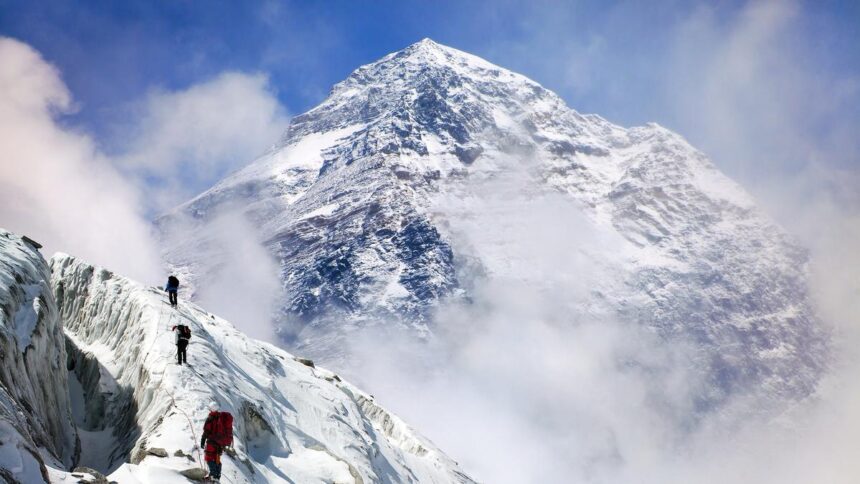Mount Everest is the highest mountain on earth – 8.85 km above sea level – and it’s actually still growing.
At that time and the rest of the Himalayas continue the inexorable uplift that dates back to its birth approximately 50 million years ago when the Indian subcontinent collided with Eurasia, Everest grew much more than expected from this alone. Scientists now think they know why, and it has to do with the monumental merging of two nearby river systems.
Everest has risen by about 15-50 m due to changes in the regional river system, with the Kosi river joining the Arun river about 89,000 years ago, researchers estimate. That translates to an uplift rate of about 0.01-0.02 inches (0.2-0.5 millimeters) per year.
The geological process at work, he said, is called isostatic rebound. This includes the increase in land mass in the Earth’s crust as the surface weight decreases. The Earth’s crust, the outermost layer of the Earth, essentially floats on top of the mantle layer made of hot semi-liquid rock.
In this case, the merging of the rivers – more like a hostile takeover, with the Kosi subduing the Arun as the rivers change over time – causes rapid erosion that carries away huge amounts of rock and soil, reducing its weight. area near Everest.
“Isostatic rebound can be likened to a floating object that adjusts its position when its weight is removed,” said geoscientist Jin-Gen Dai of the China University of Geosciences in Beijing, one of the leaders of the study published Monday in the journal. Natural Geoscience.
“When a heavy load, such as ice or eroded rock, is removed from the earth’s crust, the ground below slowly rises in response, just like a boat rises in water when its cargo is unloaded,” Dai added.
The main gorge of the combined river system is located about 28 miles (45 km) east of Everest.
The researchers, who used numerical models to simulate the evolution of the river system, estimated that the isostatic rebound is about 10% of Everest’s annual uplift rate.
This geological process is not unique to the Himalayas.
“A classic example is in Scandinavia, where the land is still rising due to the melting of the thick layer of ice that covered the area during the last Ice Age. This process continues today, affecting the coast and the landscape, thousands of years after the ice retreated,” said Dai.
Co-author Adam Smith, a University College London doctoral student in earth sciences, said the GPS measurements revealed the continued ascent of Everest and the rest of the Himalayas.
This uplift exceeds the continuous surface erosion caused by factors such as wind, rain and river flow. As this erosion continues, Everest’s uplift rate of isostatic rebound can increase, Smith said.
Neighboring peaks including Lhotse, the fourth highest in the world, and Makalu, the fifth highest, also got a boost from the same process. Lhotse experienced an ascent rate similar to Everest. Makalu, located near Arun, has a slightly higher elevation.
“This research confirms the dynamic nature of our planet. Even features that seem immutable like Mount Everest are subject to continuous geological processes, reminding us that the earth is changing, often in ways that we cannot understand on a daily basis,” said Dai.
The rigid outer part of the earth is divided into colossal plates that move slowly over time in a process called plate tectonics, with the Himalayas rising after the collision between the two plates.
Everest, also called Sagarmatha in Nepali and Chomolungma in Tibet, is located on the border between Nepal and the Tibet Autonomous Region of China. It is named for George Everest, a 19th century British surveyor of India.
“Mount Everest occupies a unique place in human consciousness,” Dai said.
“Physically, it represents the highest point on earth, giving it great significance simply because of its size,” added Dai. “Culturally, Everest is sacred to local Sherpa and Tibetan communities. Globally, it symbolizes the ultimate challenge, embodying human endurance and our drive to go beyond our perceived limits.
Published – 30 September 2024 11:23 IST




